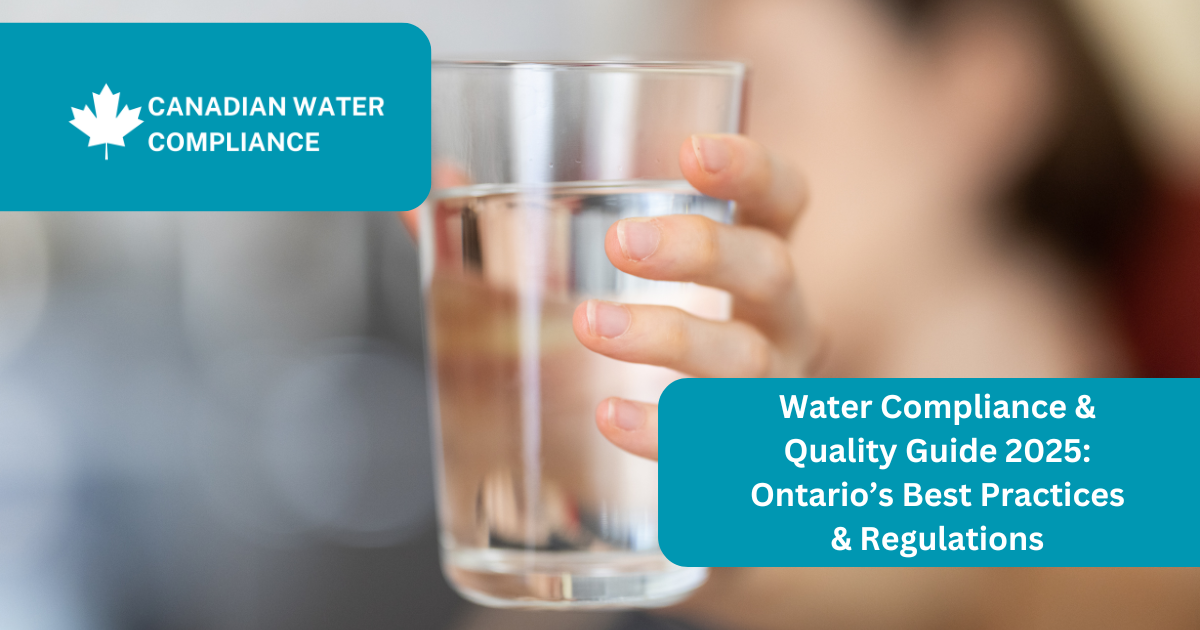
Written By: Canadian Water Compliance | On
Water quality and compliance are crucial for businesses, property owners, and municipalities across Ontario. With evolving regulations and growing concerns about contaminants, it is essential to stay informed about best practices, testing requirements, and legal obligations. This guide will cover key water safety concerns, testing frequency recommendations, and Ontario's regulatory landscape for 2025.
Poor water quality can pose significant health risks. Here are some key indicators that your water may require immediate testing:
Unusual Taste or Odor – A metallic, chlorine, or sulfur-like smell can indicate contamination.
Discoloration – Brown, yellow, or cloudy water may suggest rust, bacteria, or sediment.
Scaling & Corrosion – Excessive mineral buildup in pipes or appliances can signal water hardness issues.
Frequent Illnesses – Recurring stomach issues or skin irritations may be linked to waterborne pathogens.
The frequency of water testing depends on the source and usage. Here’s a general guideline for Ontario businesses and property owners:
Private Wells – Test for bacteria and nitrates at least twice a year (spring and fall) (Government of Ontario).
Public Facilities (e.g., Schools, Healthcare Centers) – Follow Ontario Drinking Water Quality Standards, testing quarterly for bacteria and chemical contaminants (Government of Ontario).
Commercial Buildings – Legionella testing should be conducted every 3 to 6 months in HVAC and water storage systems (Government of Ontario).
Industrial Sites – Monthly monitoring of chemical discharge and heavy metals is required under Ontario’s Industrial Sewage Discharge Regulations (Environmental Protection Act).
Rental Properties & Multi-Unit Residences – Annual testing is recommended, especially if the building has older plumbing (Safe Drinking Water Act, 2002).
Requires municipalities and designated facilities to comply with strict water quality standards (Ontario Regulation 170/03).
Mandates routine testing for E. coli, lead, and other harmful contaminants.
Updates for 2025 include stricter lead reduction programs and additional reporting obligations.
Governs water safety for restaurants, hotels, and recreational facilities (Health Protection and Promotion Act).
Non-compliance may lead to fines, closure orders, or liability lawsuits.
New constructions must adhere to low-lead plumbing standards (Ontario Building Code).
Facilities with cooling towers and HVAC systems must comply with Legionella control guidelines (Public Health Ontario).
Schedule Routine Testing – Work with certified water testing providers like Canadian Water Compliance to stay compliant.
Maintain Accurate Records – Keep testing logs for at least 5 years to demonstrate compliance.
Upgrade Infrastructure – Replace old lead pipes and install proper filtration systems.
Train Staff – Educate employees about water safety protocols and compliance procedures.
Water safety is a critical responsibility for businesses and property owners in Ontario. Regular testing, infrastructure upgrades, and compliance with provincial laws can prevent health risks and legal issues.
🔎 Need professional water testing? Contact Canadian Water Compliance today for expert services across Ontario!